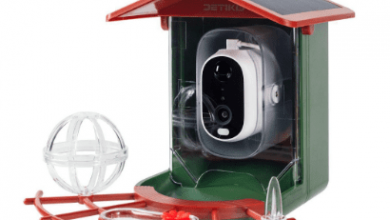How To Learn Trading Profitably

Most traders lose money—around 80% according to various broker stats—because they skip learning how to trade profitably. They jump in, follow the hype, copy trades blindly and rely on luck. But trading profitably isn’t about tips or signals. It’s about mastering a system, tracking your performance and adapting to changing markets. Focus on one strategy. Test it. Improve it. Grow slowly, manage risk tightly and only scale once you’re consistently in profit. If you treat trading like a business, not a game, profitability becomes a process—not a mystery.
Start With One Proven Strategy
Too many traders try to learn everything at once—scalping, swing trading, options, forex, crypto. The result? Confusion and losses. A smarter approach is to start with one strategy that has a defined edge.
For example, the moving average crossover strategy in forex—using the 50 EMA crossing the 200 EMA on a 1-hour chart—has been tested and used by traders for decades. It’s simple to understand, easy to backtest and offers decent win rates in trending markets.
Choose one market, one timeframe and one setup. Master it. Take 100 demo trades and contact an experienced mentor, such as WR Trading, for instructions. Record win rates, drawdowns and mistake patterns. If your setup consistently performs above a 50% win rate with 1:2 risk-reward, you’re on track to become profitable.
Use a Trading Journal Religiously
Traders who don’t journal rarely grow. You need to track everything—entry, exit, reason for trade, emotion at entry, result and what went wrong or right.
A real-world example: A trader named Josh kept losing money trading gold. After journaling for a month, he realized he was entering too early before news events. He adjusted, avoided entries 15 minutes before data releases and reduced his average loss by 40%. Journaling showed him the pattern he couldn’t see emotionally.
Use tools like Edgewonk, Notion, or even a Google Sheet. The goal is not fancy graphs but cold, hard truth. When you review your trades weekly, you’ll find your blind spots—and that’s where profit hides.
Focus on Risk First, Not Reward
New traders focus on profits; pros focus on risk. Staying in the game matters more than big wins.
Risk a fixed amount—ideally 1% per trade. With $5,000, that’s $50 max. Use stop losses and aim for at least a 1:2 risk-reward ratio. Even a 40% win rate can be profitable.
Most traders fail by going big too soon. Don’t. Start small, stay consistent—that’s how pros win.
Backtest Before You Risk Real Money
Backtesting shows you if a strategy works before you lose real money. Pick a market and go back in time—use TradingView’s replay function or download historical data.
Let’s say you’re testing a breakout strategy for crypto trading or on GBP/USD. Go back 12 months. Find all the setups that meet your rules. Record win/loss, average return and drawdown.
If your backtest shows over 60% wins and positive return, you now have data to support live trading. Without backtesting, you’re just gambling.
Some tools to help:
- TradingView for chart replay
- Forex Tester for deep backtesting
- Excel or Google Sheets for result tracking
Understand Market Conditions
Not every strategy works in every market. A trending strategy will fail in a sideways market. A mean-reversion strategy will get destroyed in a breakout. Knowing the context is essential.
Example: A trader using RSI overbought/oversold on crypto might do well during low volatility but get crushed in a high-volume breakout. If Bitcoin breaks resistance on heavy volume and RSI says “overbought,” shorting it is suicide.
Learn to read price action. Are markets ranging or trending? What’s the volatility like? Use the Average True Range (ATR) to gauge it. Follow economic calendars like ForexFactory to avoid surprise news events.
Stick to One Trading Timeframe
Jumping between 5-minute, 1-hour and daily charts creates chaos. Your trade setups, stops and mindset will never align. Choose one timeframe and build your system around it.
For beginners aiming for profitability, the 1-hour or 4-hour timeframe is a sweet spot. It’s slow enough to avoid overtrading and fast enough to offer multiple setups per week. Avoid 1-minute or 5-minute charts unless you’re scalping with proven skill.
A consistent timeframe trains your pattern recognition. Over time, your brain starts spotting the same setups over and over. That’s where your edge grows.
Master Your Mindset
No matter how good your system is, if you can’t follow it with discipline, you’ll fail. Profitable traders build mental habits as much as trading skills.
Emotions kill consistency. Fear stops you from entering. Greed makes you overtrade. Revenge trading is real and destructive.
Example: After three losses, a trader tries to win it back by doubling position size—breaks rules, loses even more. It’s how accounts get wiped.
The fix? Set rules and follow them no matter how you feel. Take a break after 2 losses in a day. Review your plan before every session. Meditate or journal to stay self-aware.
Review, Improve, Repeat
Learning to trade profitably isn’t a one-time task. It’s an ongoing process. Every month, review your trades. What worked? What didn’t? Is your strategy still performing? Are you making the same mistakes?
Example: After 3 months, you notice your win rate drops during high-volatility weeks. You decide to avoid NFP and FOMC days. Profitability increases the next month.
Continuous review turns average traders into profitable ones. The market changes. Your edge needs to evolve with it.





